Last Updated on April 12, 2021
It was a special moment when I was handed my pilgrim’s pass in the Papal Basilica of St. Mary of the Angels in Assisi – even though I am not religious. But it made it official: I would be walking the Via Amerina, a historic pilgrim’s route, for the next six days, until we’d reach Rome, the ultimate destination for a pilgrim.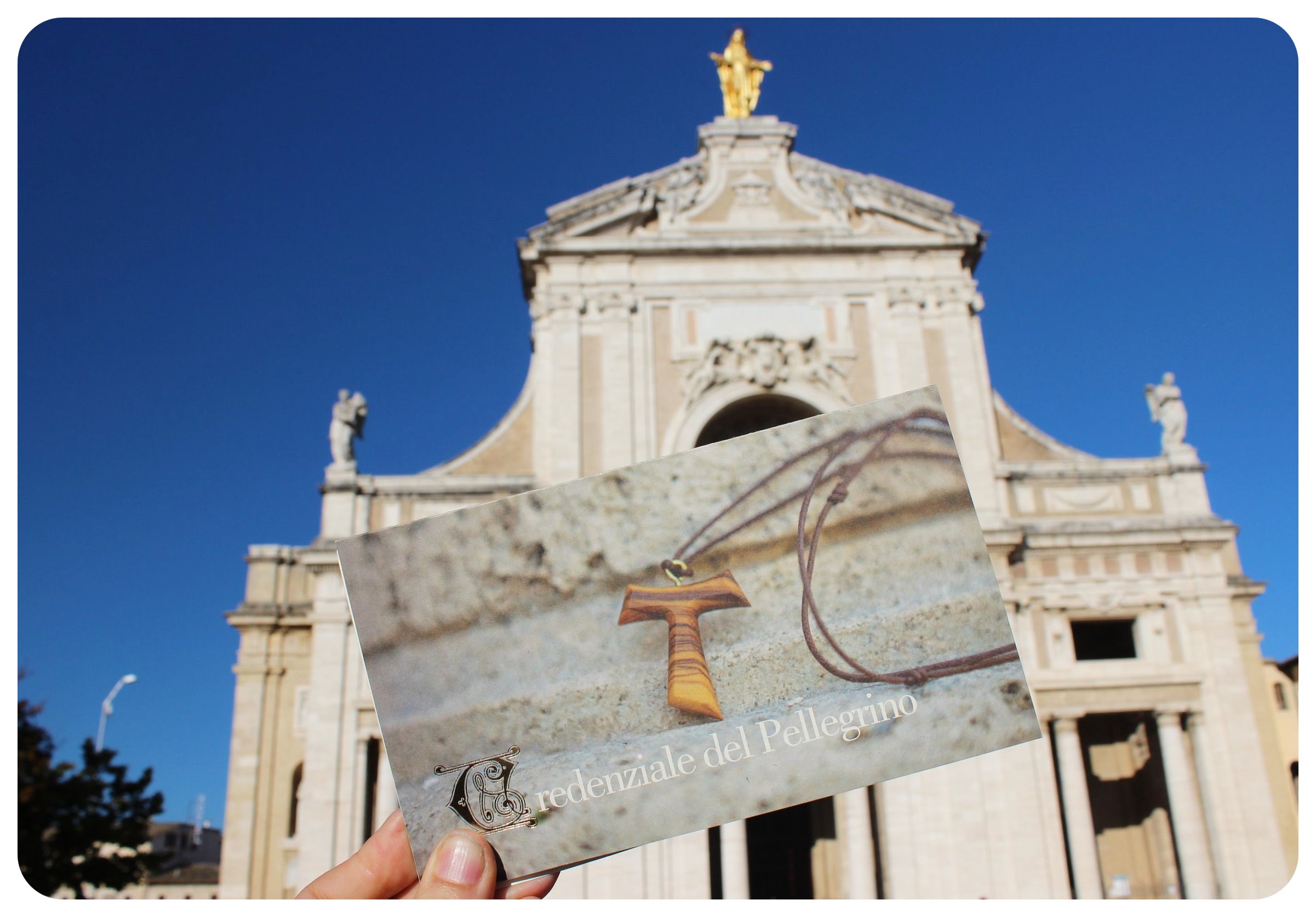
Assisi is an important sacred place for pilgrims because St Francis, the founder of the Order of Friars Minor, the women’s Order of Saint Clare, the Third Order of Saint Francis and the Custody of the Holy Land, and one of the most venerated religious figures in history, was born and died here.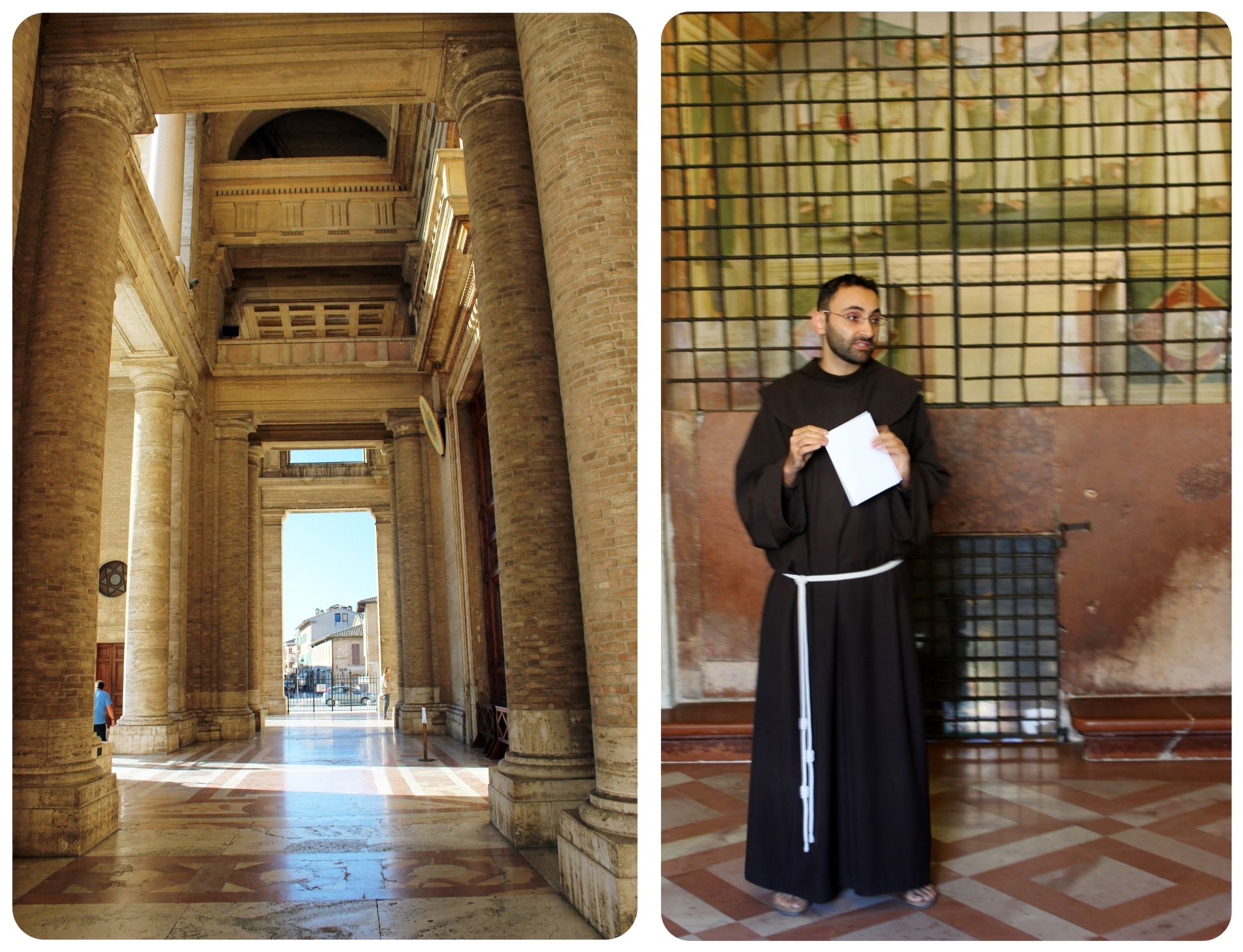 Several pilgrims’ trails start or pass through Assisi, inspired by the life and the travels of St Francis – most famously the St Francis Way, a 340 miles (550km) pilgrimage from Florence through Assisi to Rome through Central Italy, visiting key sites from the saint’s life.
Several pilgrims’ trails start or pass through Assisi, inspired by the life and the travels of St Francis – most famously the St Francis Way, a 340 miles (550km) pilgrimage from Florence through Assisi to Rome through Central Italy, visiting key sites from the saint’s life.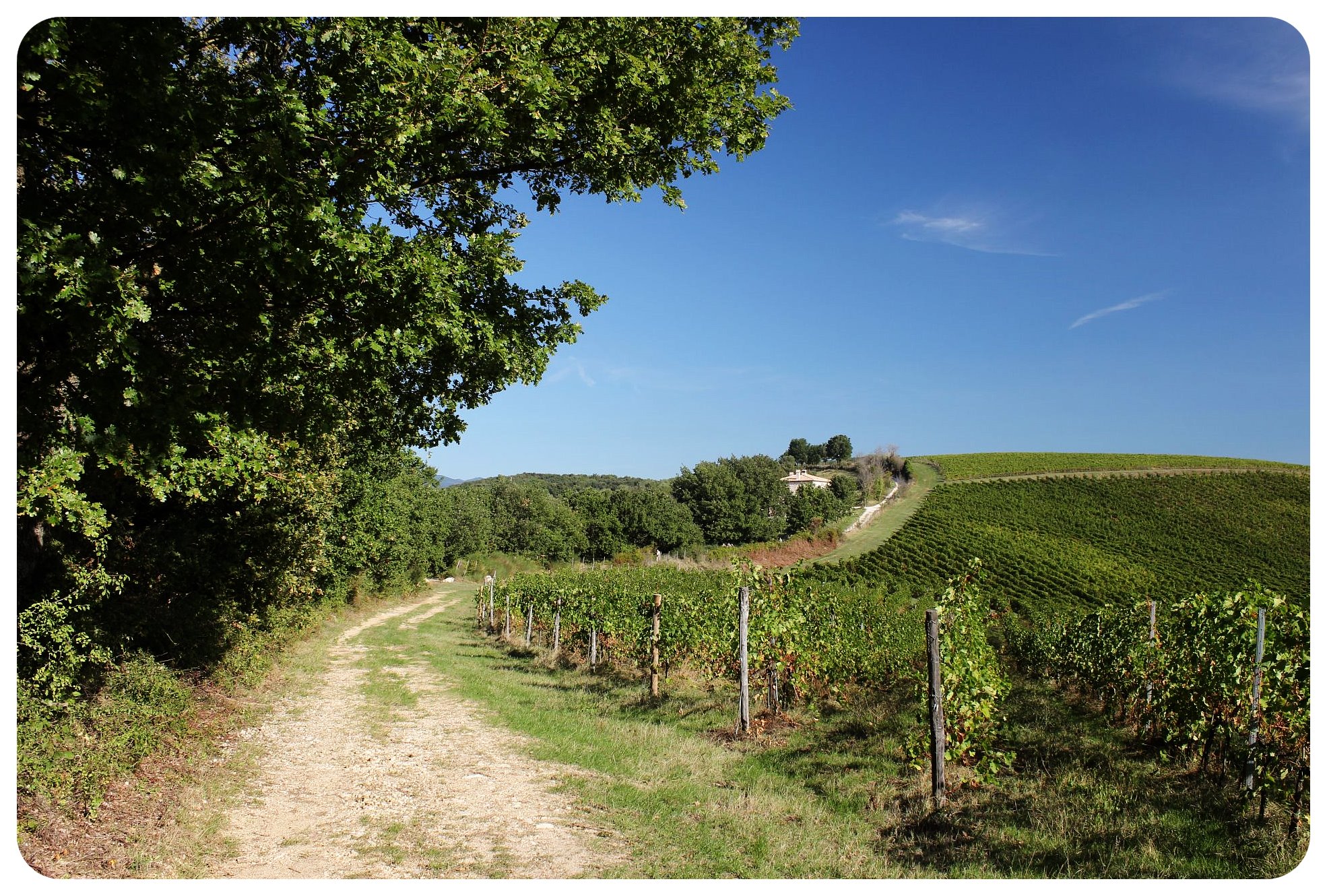 The Via Amerina may include several spiritual sites, like churches and monasteries, but of course you don’t have to be religious to enjoy the walk through the Italian countryside. Just like on the Camino De Santiago, Spain’s famous pilgrim’s route, you find people of all ages, nationalities and backgrounds, and everyone is walking for a different reason. Some are at a crossroads in their life, looking for a sign of which way to take. Some are walking to process a dramatic event in their lives. Some are walking to focus on spiritual virtues, of course, and others walk simply because they enjoy walking.
The Via Amerina may include several spiritual sites, like churches and monasteries, but of course you don’t have to be religious to enjoy the walk through the Italian countryside. Just like on the Camino De Santiago, Spain’s famous pilgrim’s route, you find people of all ages, nationalities and backgrounds, and everyone is walking for a different reason. Some are at a crossroads in their life, looking for a sign of which way to take. Some are walking to process a dramatic event in their lives. Some are walking to focus on spiritual virtues, of course, and others walk simply because they enjoy walking.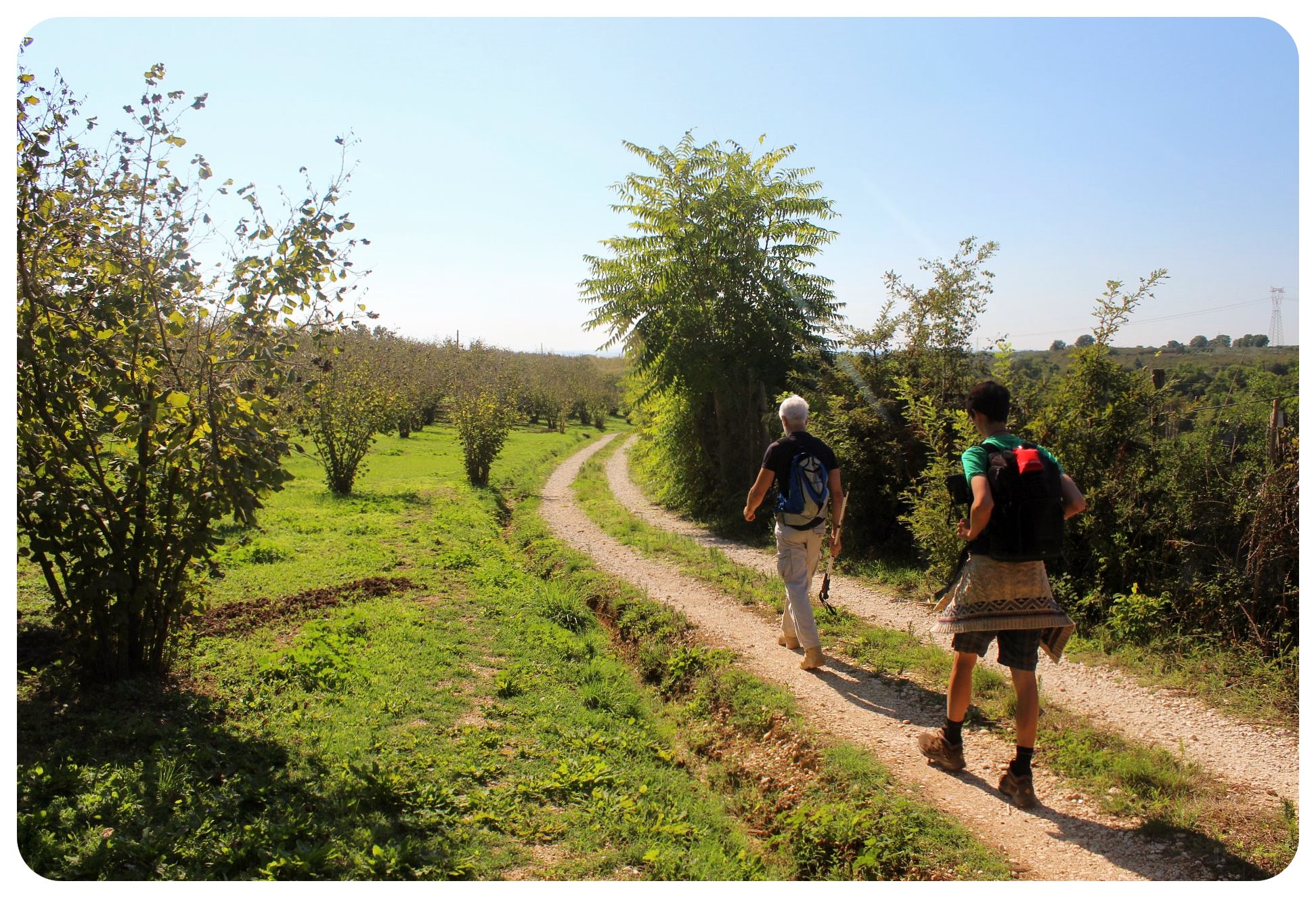 Whatever the reason, the one thing we all share is the journey. The dirt roads across the Umbrian hills, the paths along the vineyards, where vines heavy with ripe grapes are waiting to be harvested. The walk along deserted country roads, through grain fields, and through little Italian villages that barely get any tourists, save the few pilgrims that walk this ancient trail.
Whatever the reason, the one thing we all share is the journey. The dirt roads across the Umbrian hills, the paths along the vineyards, where vines heavy with ripe grapes are waiting to be harvested. The walk along deserted country roads, through grain fields, and through little Italian villages that barely get any tourists, save the few pilgrims that walk this ancient trail.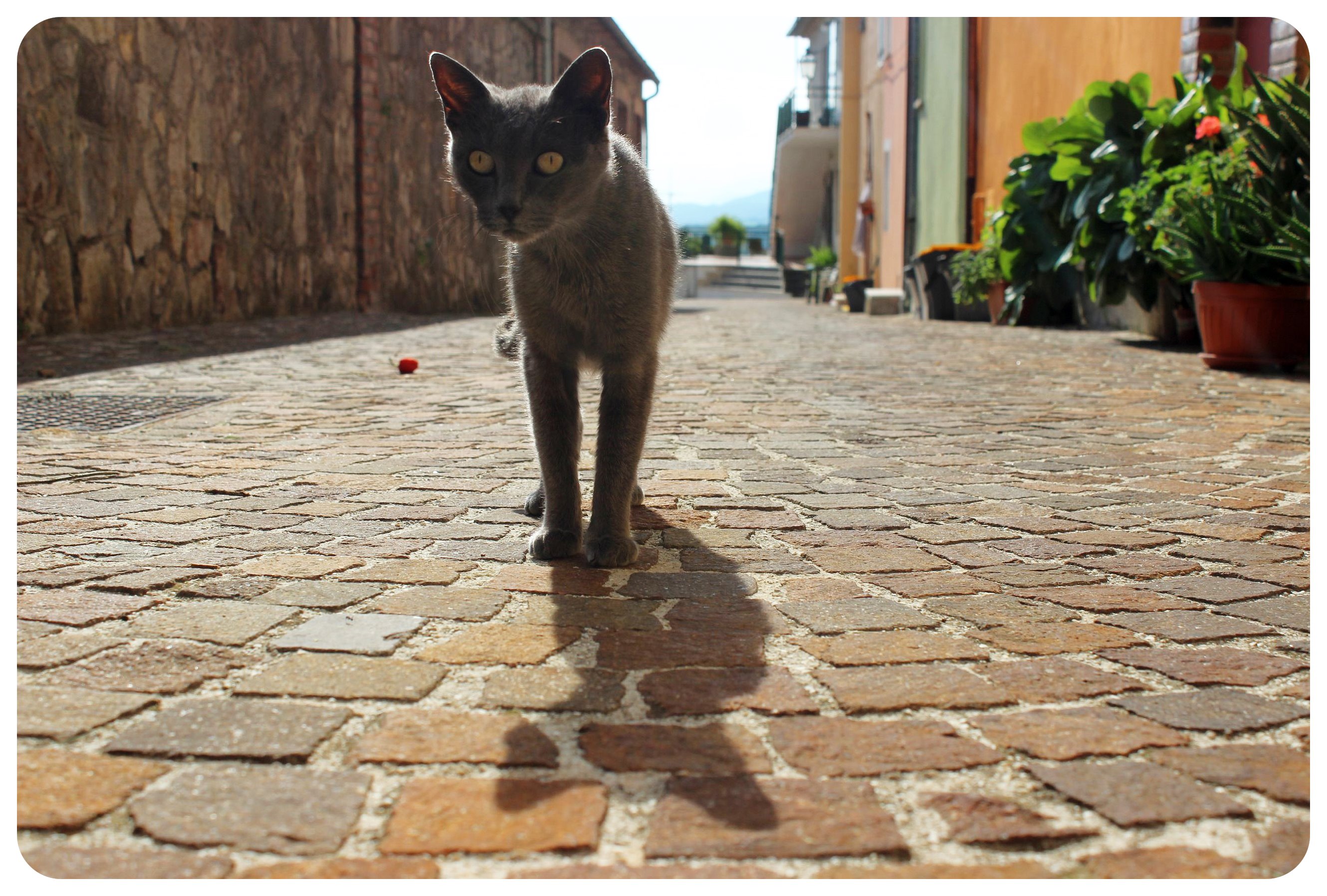
The Via Amerina: An Ancient Roman Road
The Via Amerina dates back to Roman times, when it was built following the route of an ancient Etruscan trading trail. The Romans paved the entire road with big basalt rocks, some of which are still there today. Several times along the way I found myself walking on the original basalt rocks.
 What made the road so important during medieval times was the fact that it was the only route that was open between Rome and Ravenna, which was the capital of the Byzantine Empire at the time.
What made the road so important during medieval times was the fact that it was the only route that was open between Rome and Ravenna, which was the capital of the Byzantine Empire at the time.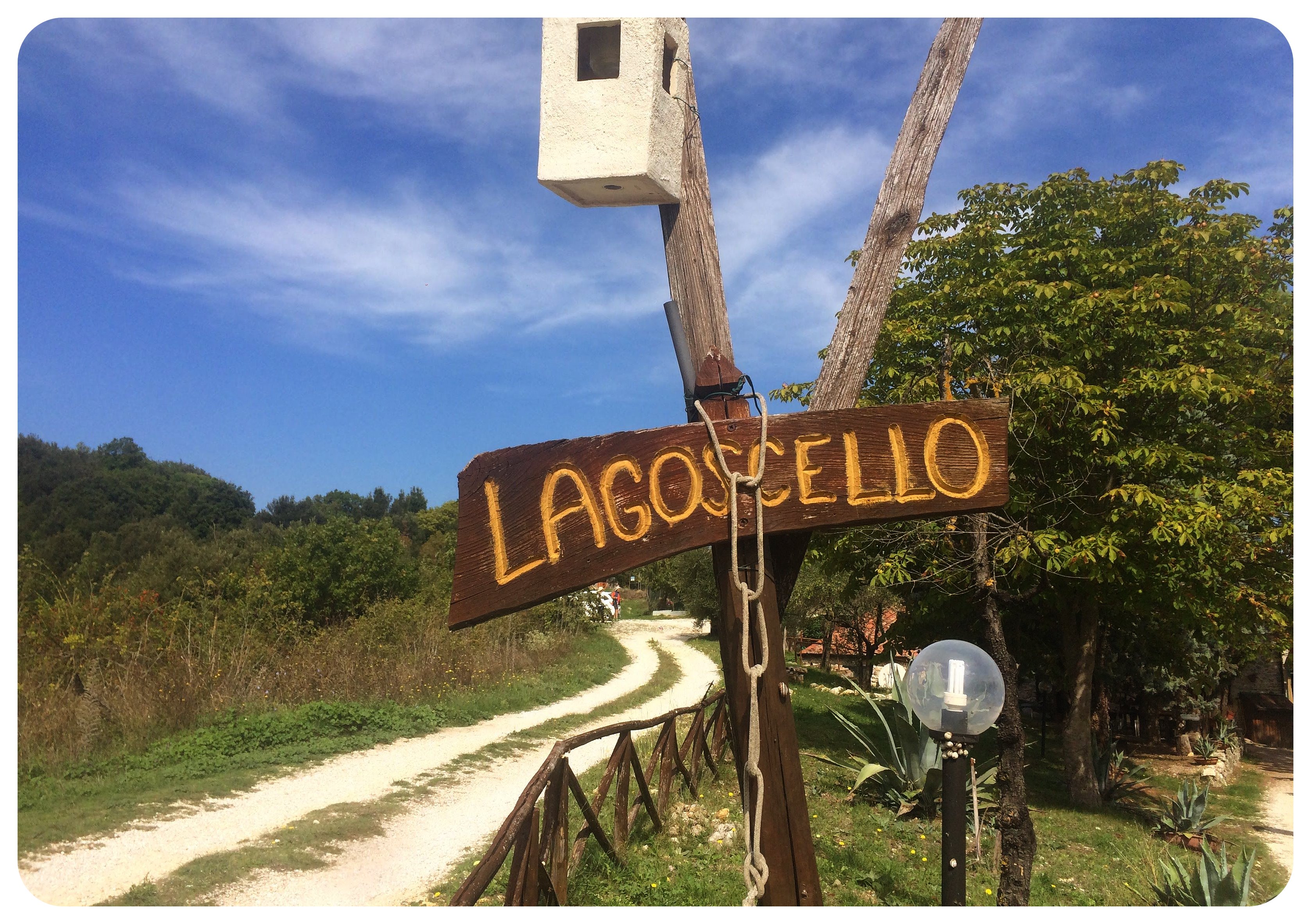 The trail also has a connection to other European roads: the Via Francigena meets the Via Amerina just outside of Rome, combining the two ancient routes on their last miles to the Vatican.
The trail also has a connection to other European roads: the Via Francigena meets the Via Amerina just outside of Rome, combining the two ancient routes on their last miles to the Vatican.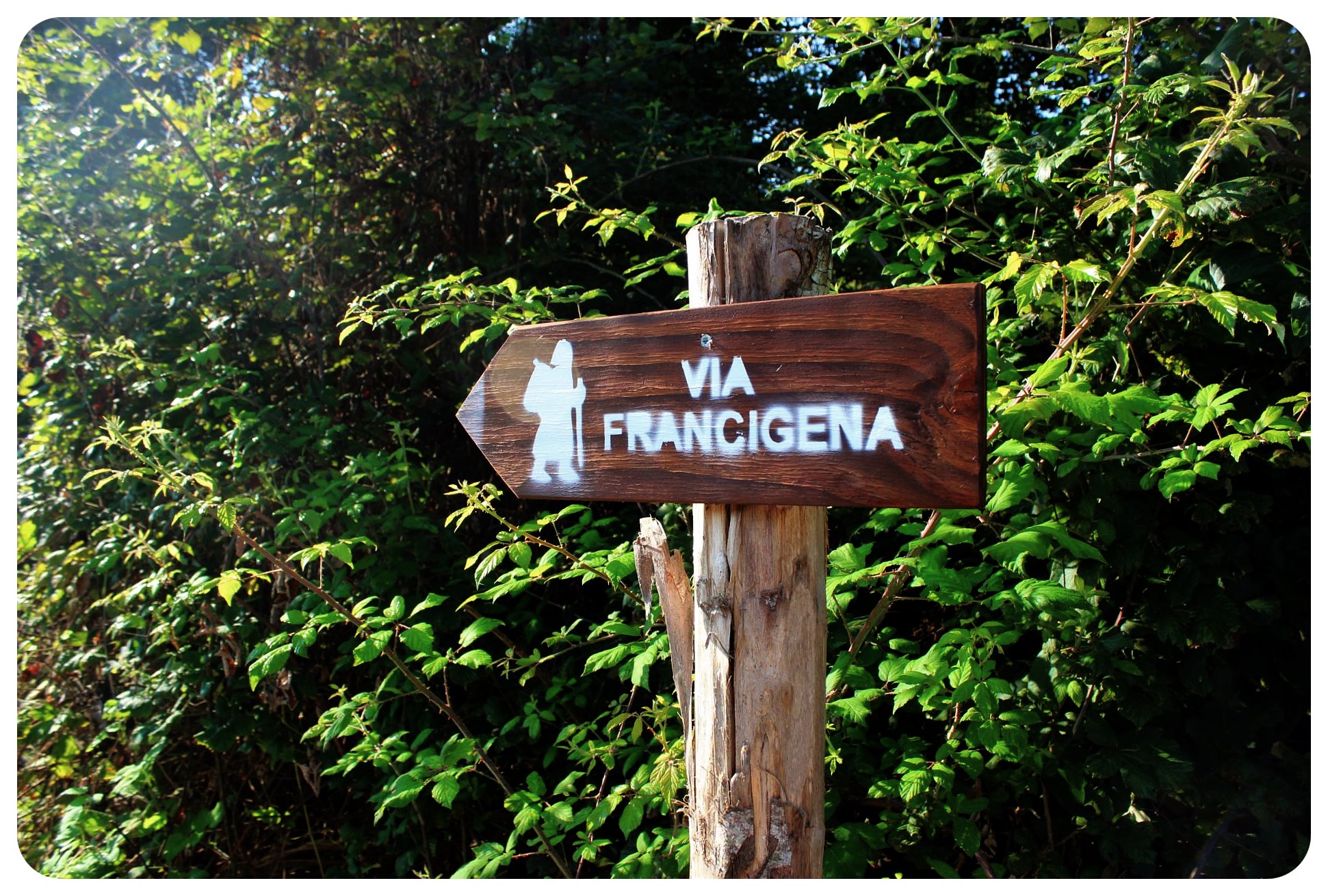 And there are many more than just these two medieval roads – there’s a number of Roman roads that lead to Rome, all of which were important trading routes in Roman and medieval times, connecting major religious and commercial hubs, like Rome with Jerusalem. Five routes that are particularly noteworthy in Italy are the Way of St Francis, Benedict’s Path, the Via Lauretana, the aforementioned Via Francigena and Via Amerina, parts of which I walked.
And there are many more than just these two medieval roads – there’s a number of Roman roads that lead to Rome, all of which were important trading routes in Roman and medieval times, connecting major religious and commercial hubs, like Rome with Jerusalem. Five routes that are particularly noteworthy in Italy are the Way of St Francis, Benedict’s Path, the Via Lauretana, the aforementioned Via Francigena and Via Amerina, parts of which I walked.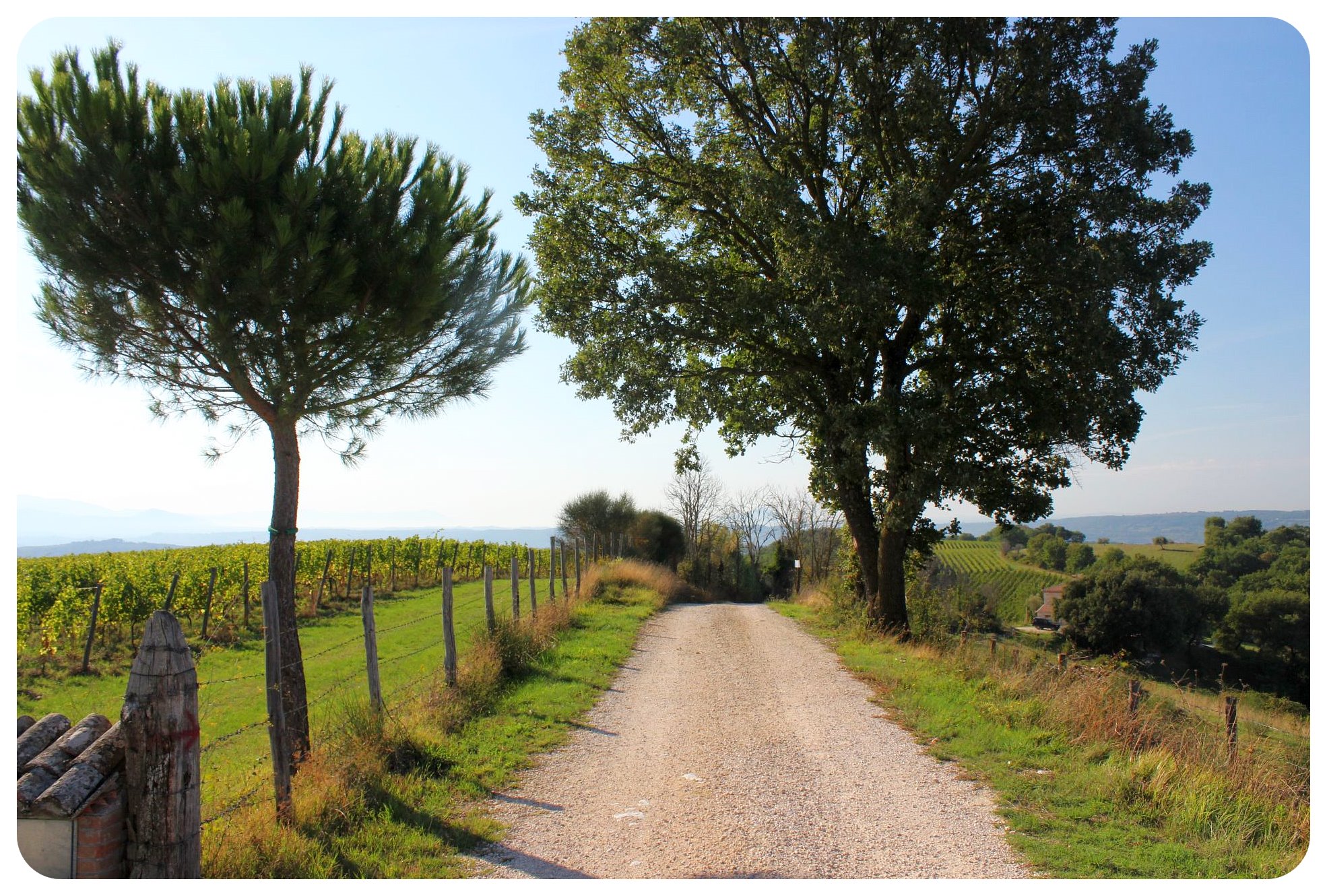 Day after day, we got up, put on our walking shoes and faced the challenge of another long and strenuous section of the path. I was surprised that we didn’t pass any other hikers, but the Via Amerina, despite its historic significance, isn’t among the most popular multi-day walking routes in Europe. The Camino, the Pilgrim Way to Canterbury or the Via Francigena, a longer version of the Via Amerina that goes from France to Rome, are much more popular.
Day after day, we got up, put on our walking shoes and faced the challenge of another long and strenuous section of the path. I was surprised that we didn’t pass any other hikers, but the Via Amerina, despite its historic significance, isn’t among the most popular multi-day walking routes in Europe. The Camino, the Pilgrim Way to Canterbury or the Via Francigena, a longer version of the Via Amerina that goes from France to Rome, are much more popular.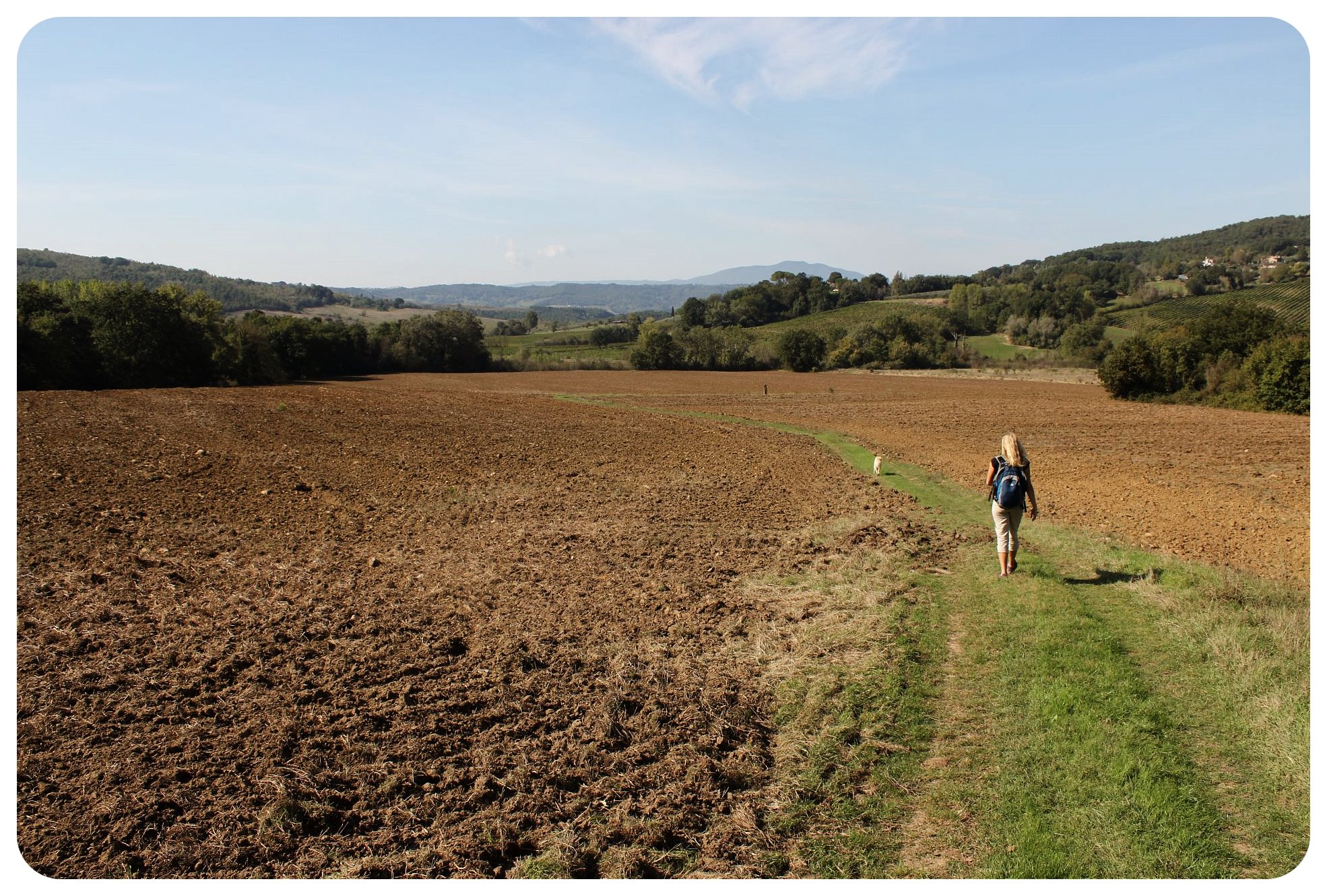
Italy Beyond The Major Cities
The little towns we stopped in along the way are towns that most visitors to Italy would never set foot in – towns like Nepi, Gallese or Orte aren’t places you find on your typical Italy itinerary. There’s no Florence, no Venice, no Milan. Instead, you get a glimpse into what small-town life looks like in Italy, where the food and wine in the trattorias comes right from the fields surrounding the town. Places where people know each other and stop for a chat in the town square, have a quick espresso in one of the ever-present espresso bars.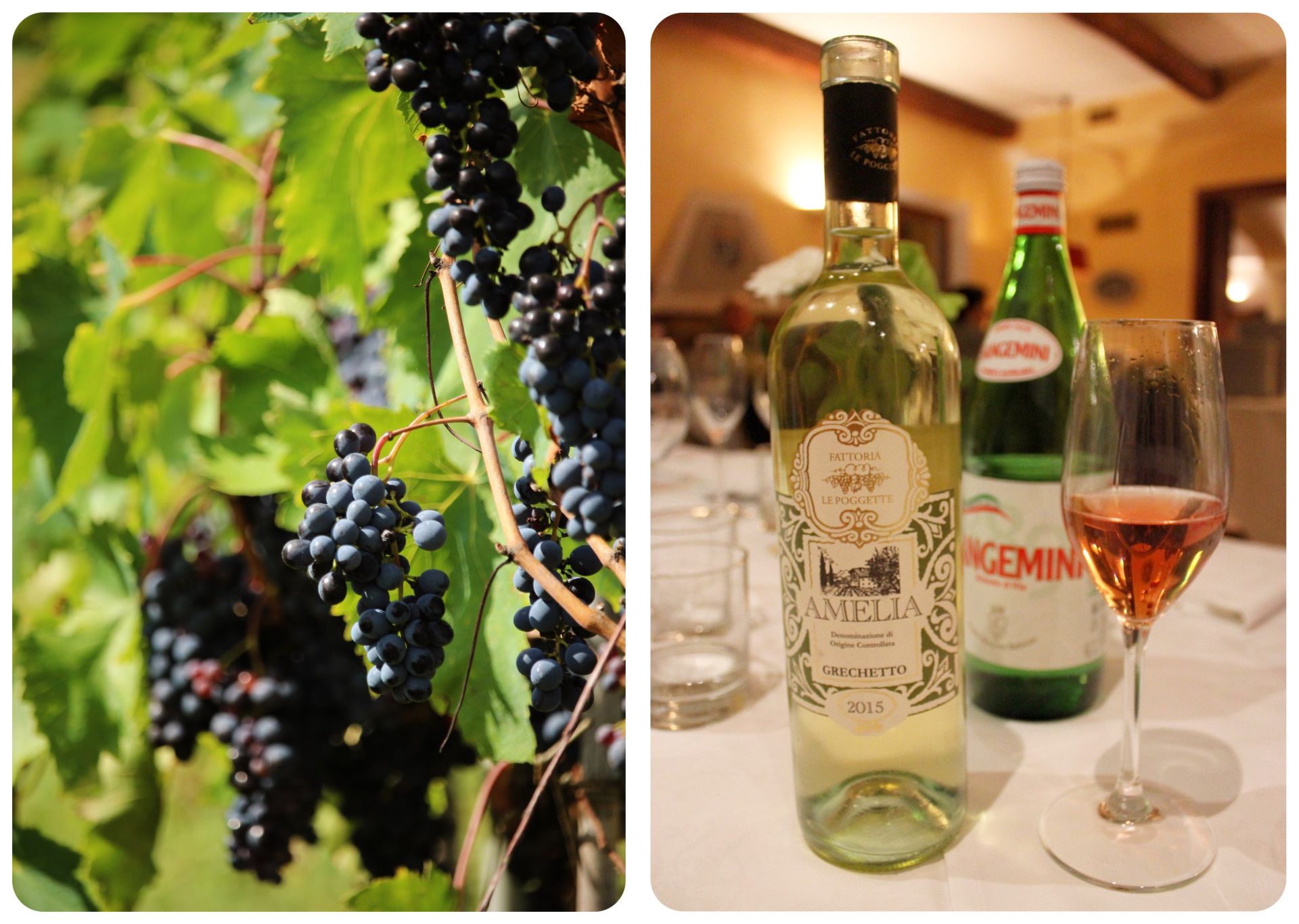 That’s what I loved most about this walk, getting a deeper insight into the real Italy, the country beyond landmarks like the Leaning Tower of Pisa or the Colosseum. This walk is a spiritual journey for pilgrims, but for me, it was a cultural and culinary pilgrimage, in search of authentic dishes of Umbria and Latium, the regions I traversed, and in search of cultural treasures that are overlooked by most guide books.
That’s what I loved most about this walk, getting a deeper insight into the real Italy, the country beyond landmarks like the Leaning Tower of Pisa or the Colosseum. This walk is a spiritual journey for pilgrims, but for me, it was a cultural and culinary pilgrimage, in search of authentic dishes of Umbria and Latium, the regions I traversed, and in search of cultural treasures that are overlooked by most guide books.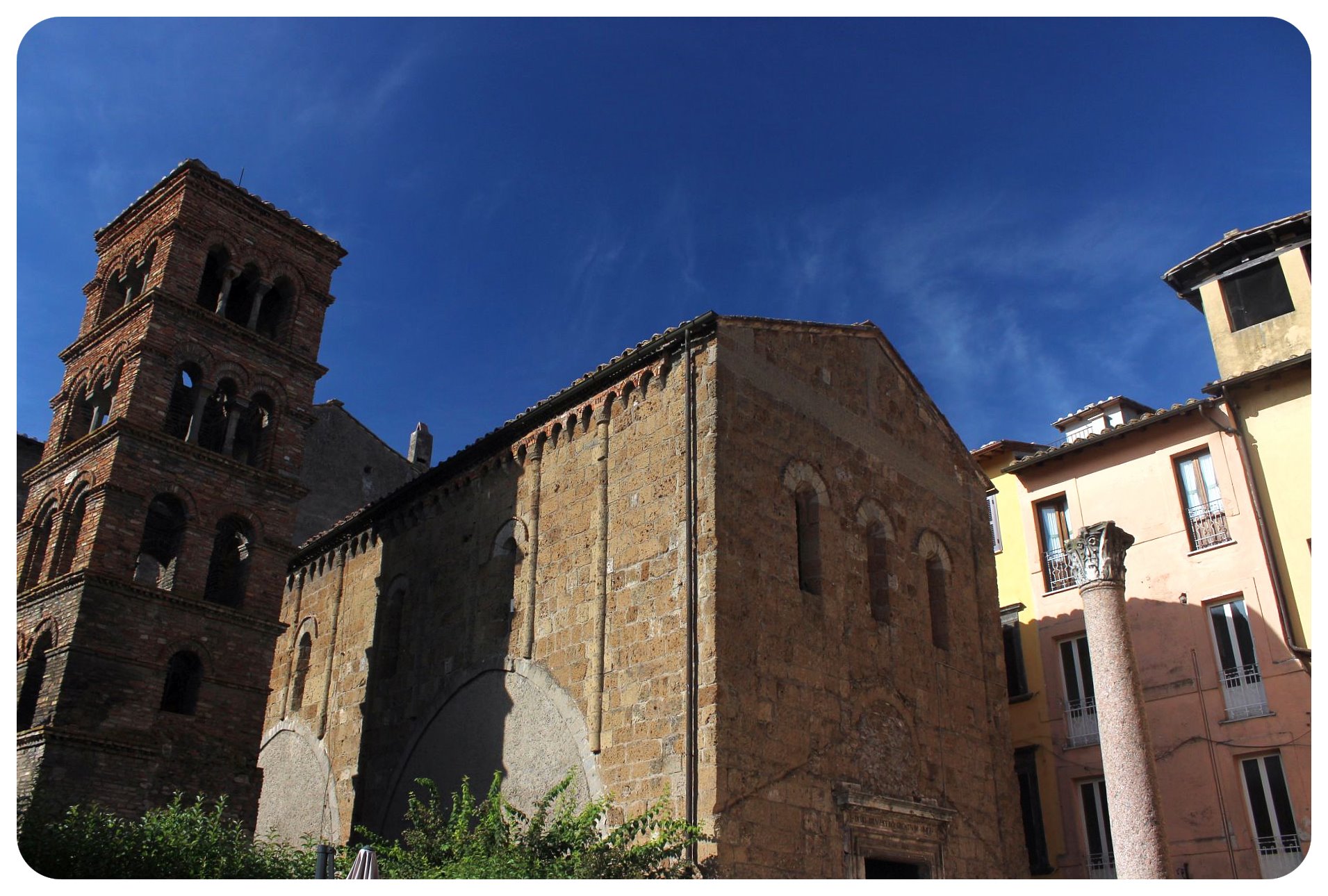 The total distance between Rome and the town of Amelia, after which the route was named (Amelia was known as Ameria in Roman times) was 59 miles (95 kilometers).
The total distance between Rome and the town of Amelia, after which the route was named (Amelia was known as Ameria in Roman times) was 59 miles (95 kilometers).
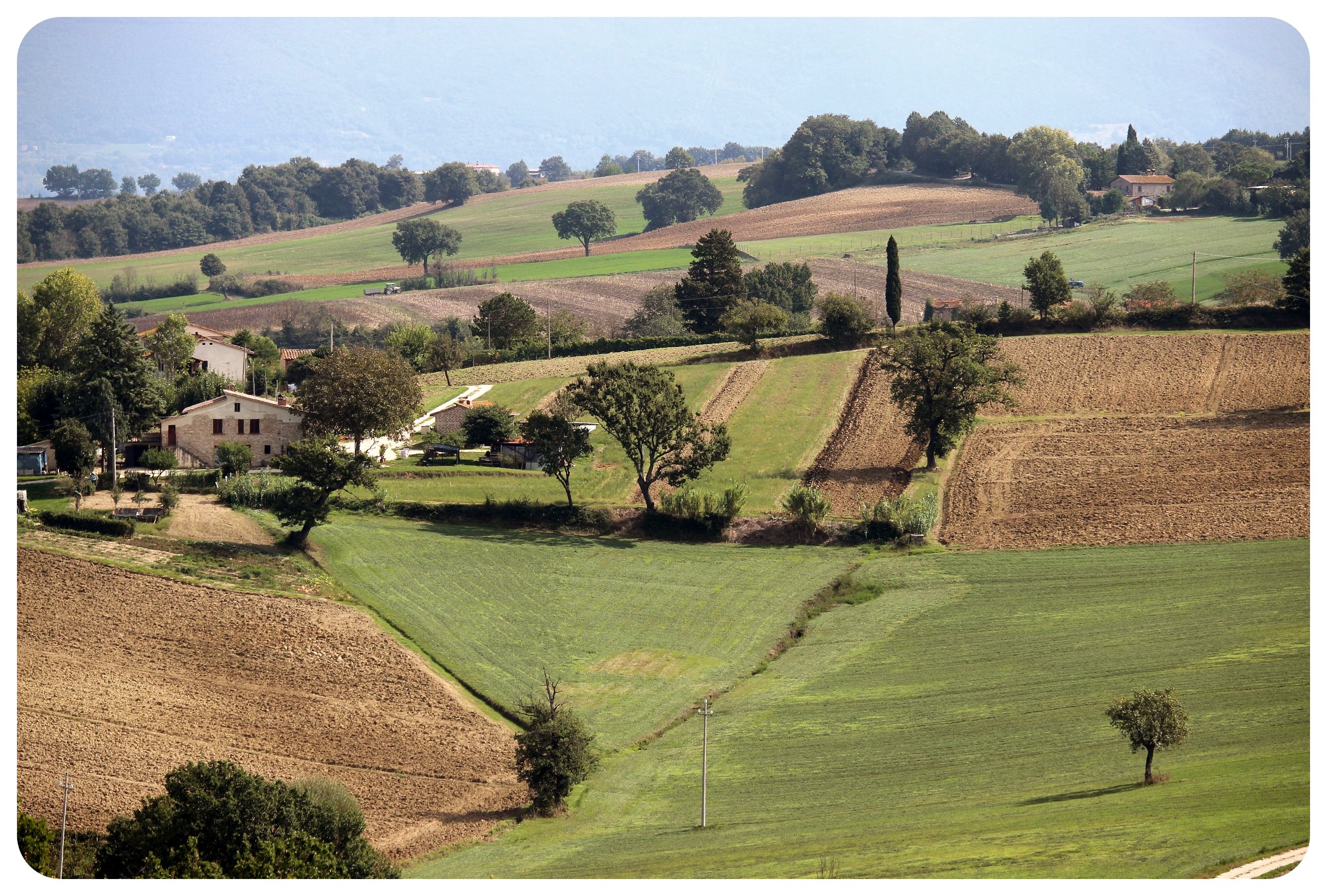 Just north of Amelia, the Via converges with two other ancient routes, the Via Flaminia, which continues to the Adriatic Coast, and the Via Cassia. Eventually, the Via Flaminia was extended all the way to Rome, and with a better surface, it led to the decline of the Via Amerina, which was consequently less used.
Just north of Amelia, the Via converges with two other ancient routes, the Via Flaminia, which continues to the Adriatic Coast, and the Via Cassia. Eventually, the Via Flaminia was extended all the way to Rome, and with a better surface, it led to the decline of the Via Amerina, which was consequently less used.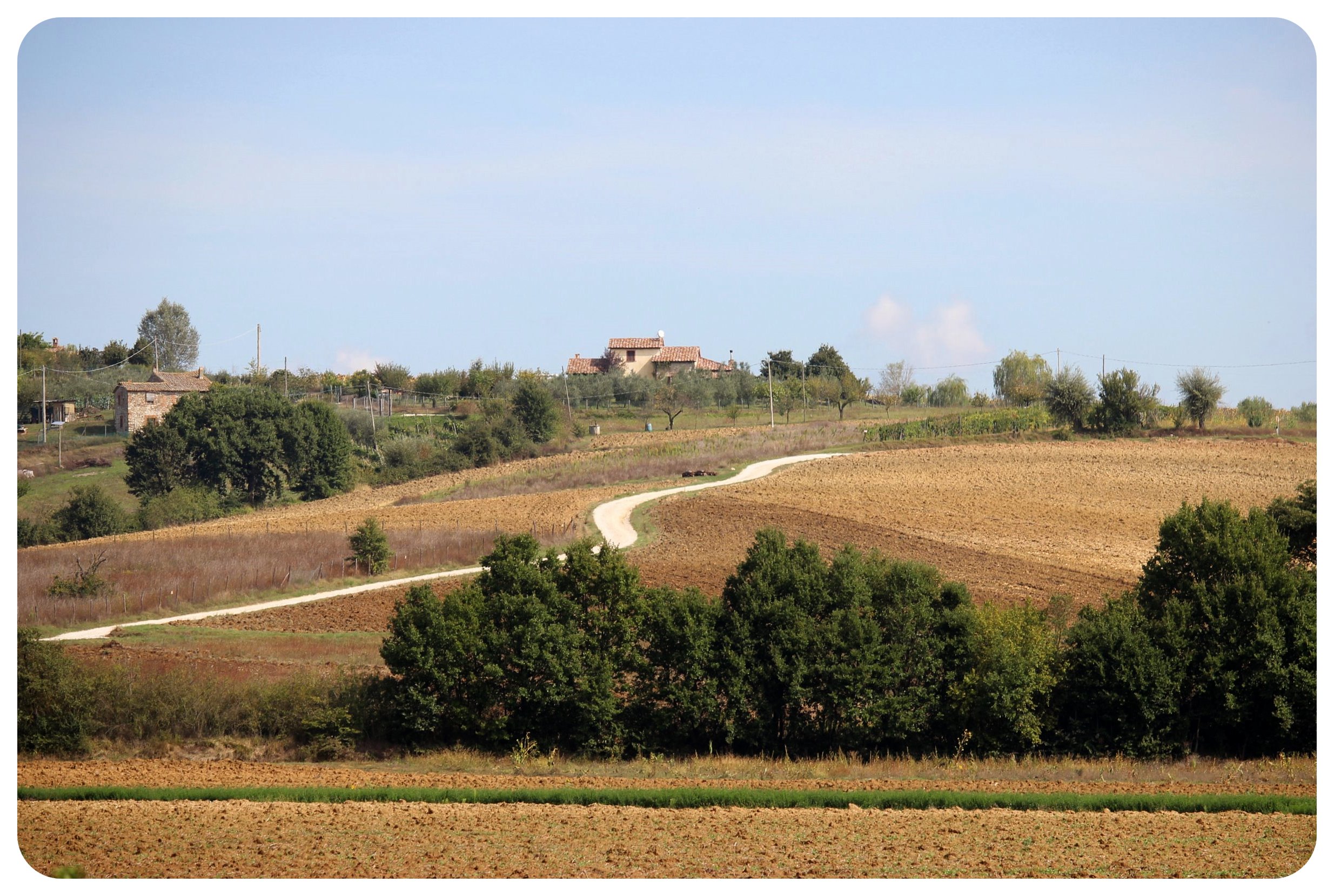 However, the Via is now seeing a revival, and is becoming increasingly popular again with hikers and cyclists. And you don’t have to walk the entire length of it, you could also base yourself in Amelia or Civita Castellana or another town along the route, and walk sections of it.
However, the Via is now seeing a revival, and is becoming increasingly popular again with hikers and cyclists. And you don’t have to walk the entire length of it, you could also base yourself in Amelia or Civita Castellana or another town along the route, and walk sections of it.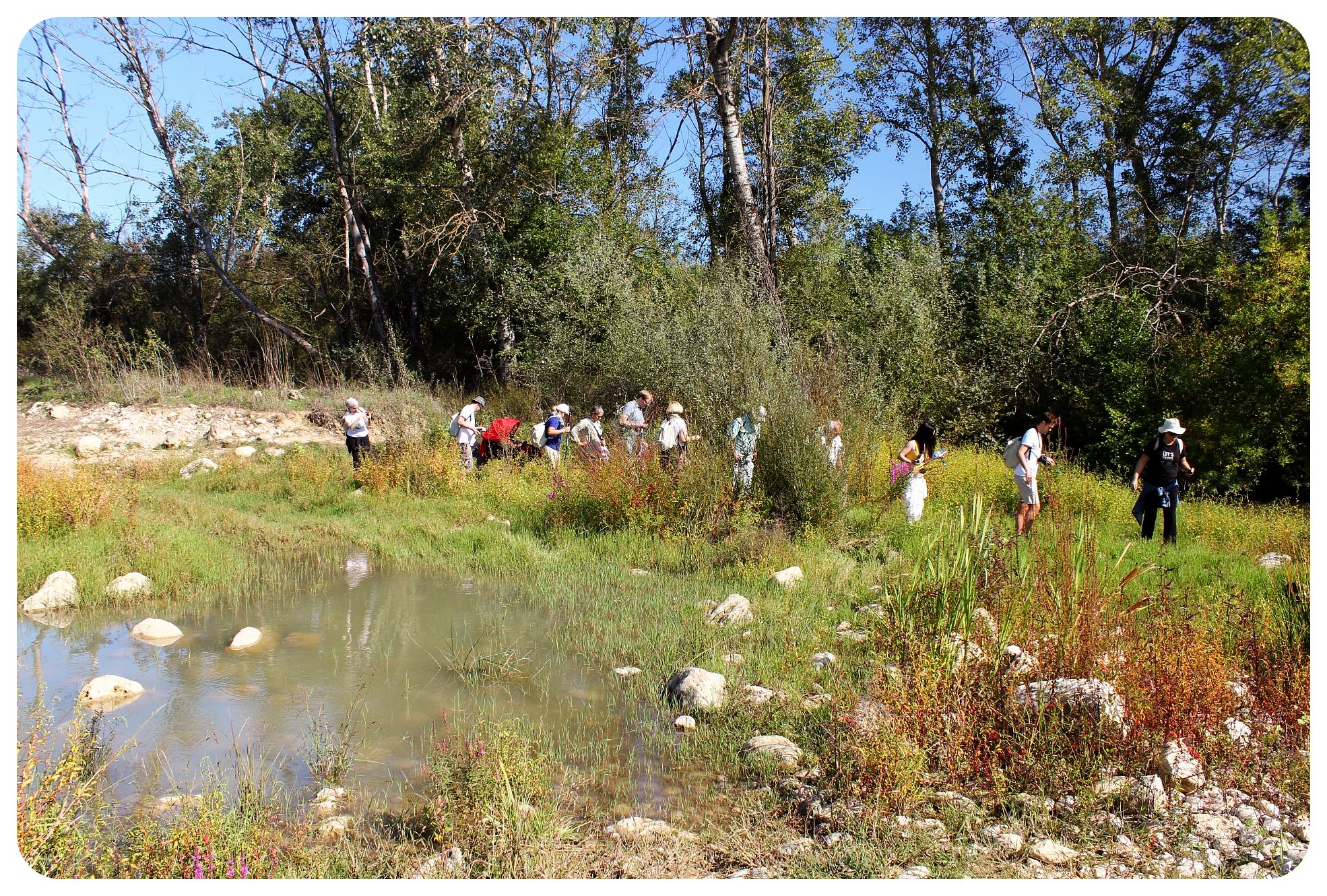 But before I tell you the practical aspects on how you can walk the Via Amerina yourself, I wanted to share some of my personal highlights along the way.
But before I tell you the practical aspects on how you can walk the Via Amerina yourself, I wanted to share some of my personal highlights along the way.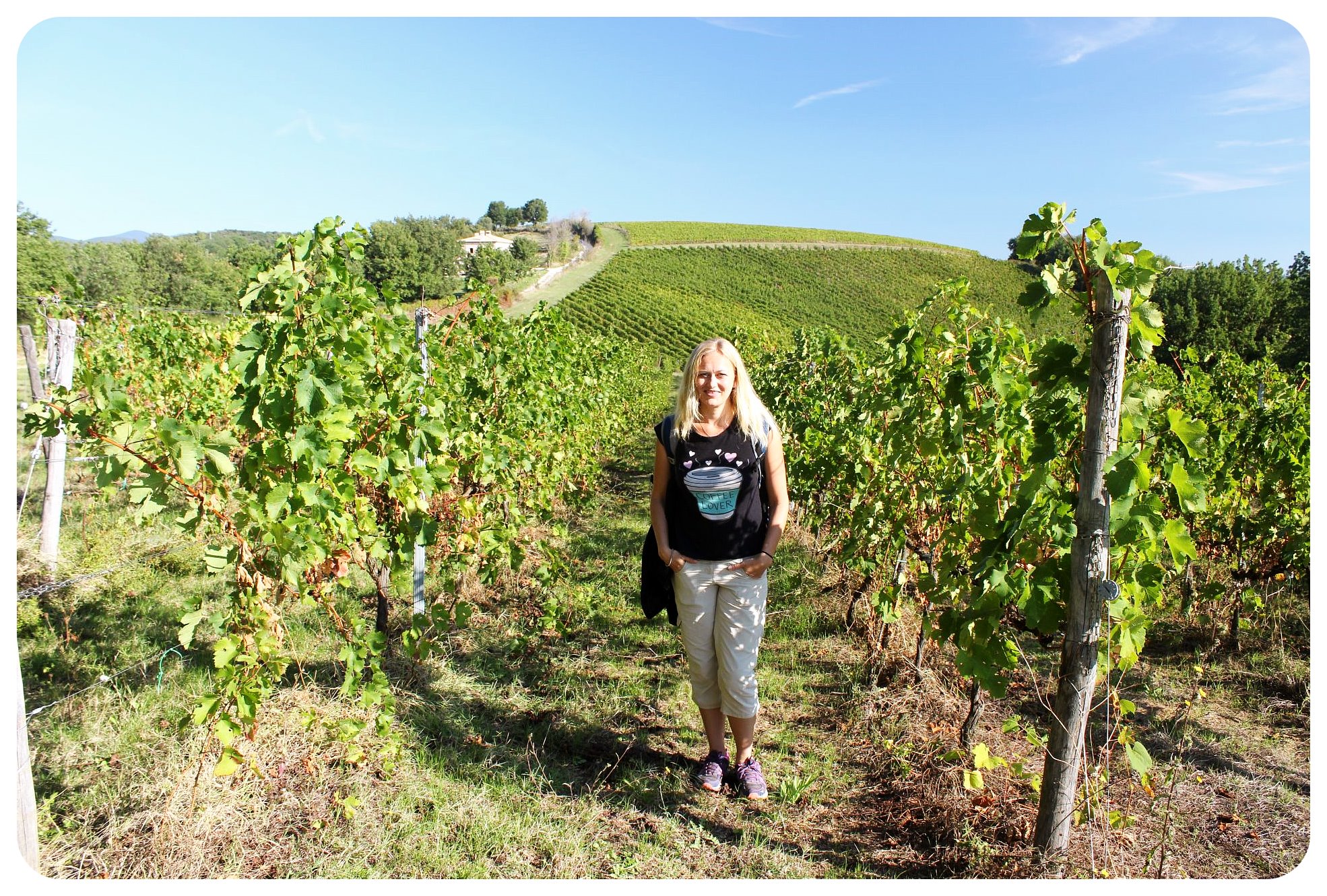
Assisi: Where it all Begins
I wish we would have had more time in Assisi to also see the famous Papal Basilica of Saint Francis of Assisi, which is the mother church of the Roman Catholic Order of Friars Minor Conventual and a UNESCO World Heritage site, but with a long walk ahead of us, we only got to stop briefly in Assisi, receive our pilgrims passports and visit the Papal Basilica of St. Mary of the Angels.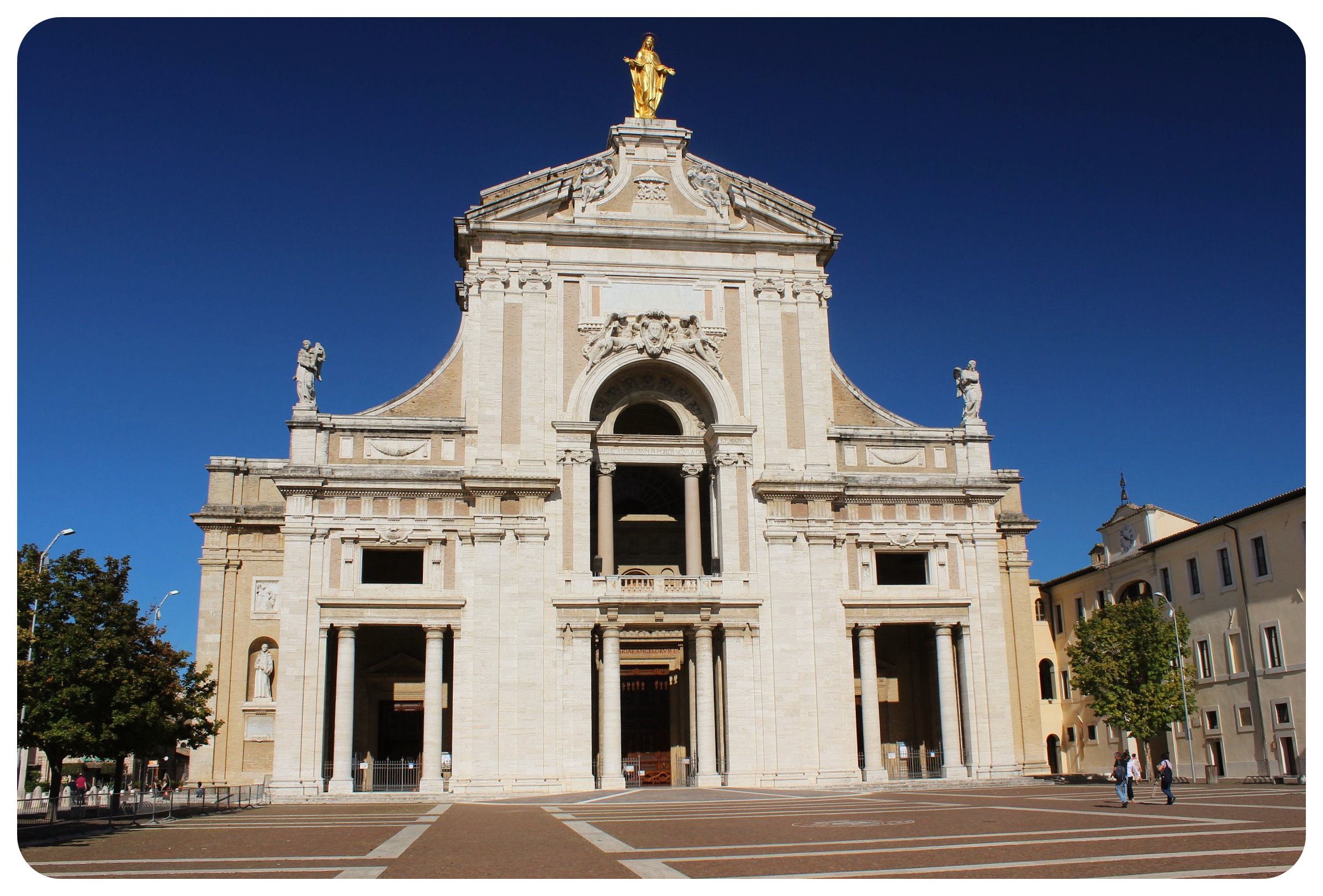
While this church might not have the stunning views of the more famous Papal Basilica of Saint Francis of Assisi, what makes this church special is the fact that it is the seventh largest Christian church and it was here that the young Francis of Assisi understood his vocation and renounced the world in order to live in poverty among the poor, consequently starting the Franciscan movement.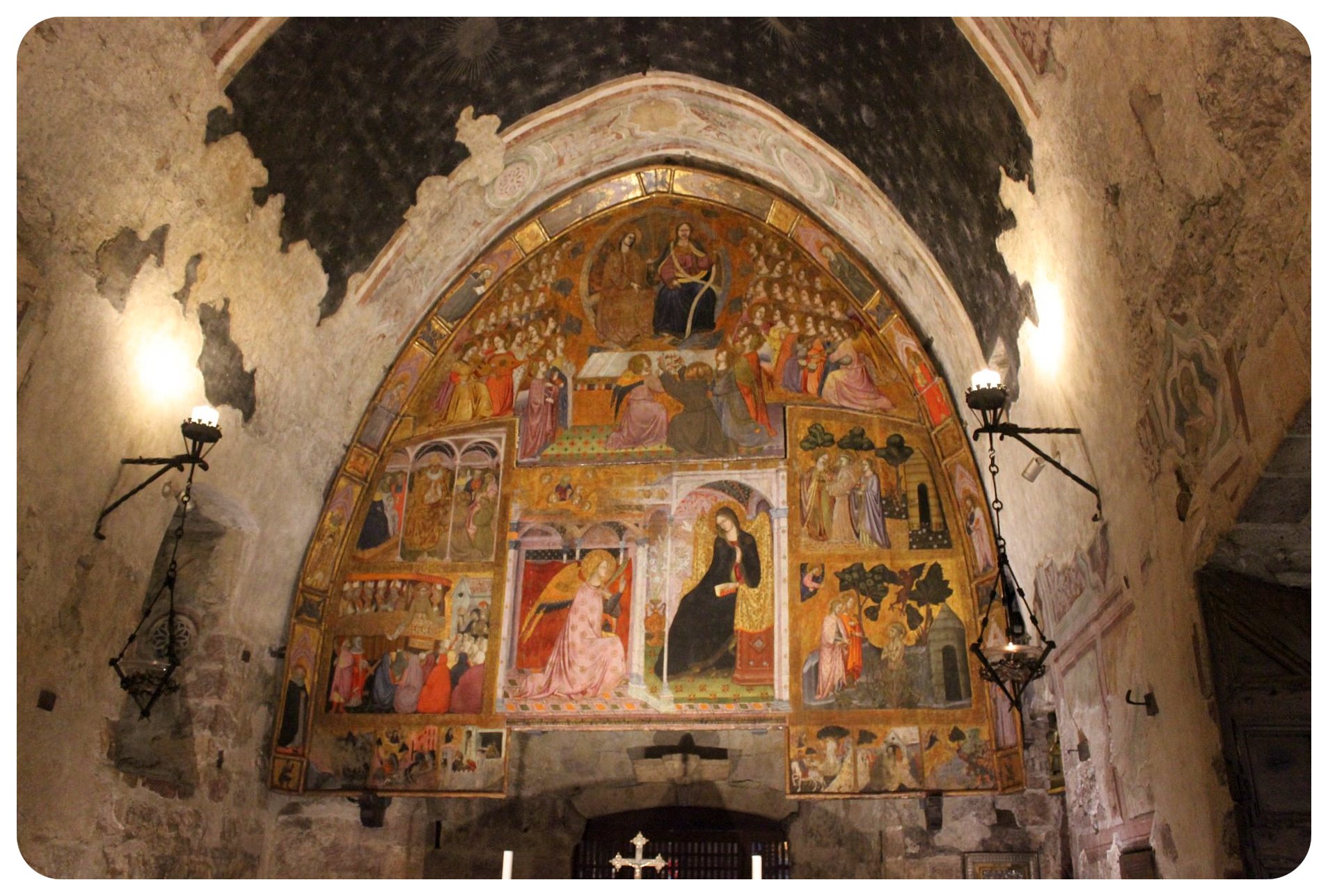
Another thing that makes the church stand out: The chiesetta (little church) of Porziuncola (Italian for “little portion”) which is the most sacred place for Franciscans. Benedictine monks gave this little church, dating from the 9th century, to St Francis. While we received our pilgrims’ passes in Assisi, the actual start of the walk for us was Castel dell’Aquila, where we left the old town through the remarkable medieval Porta Amerina and started our walk south, towards Rome.
While we received our pilgrims’ passes in Assisi, the actual start of the walk for us was Castel dell’Aquila, where we left the old town through the remarkable medieval Porta Amerina and started our walk south, towards Rome.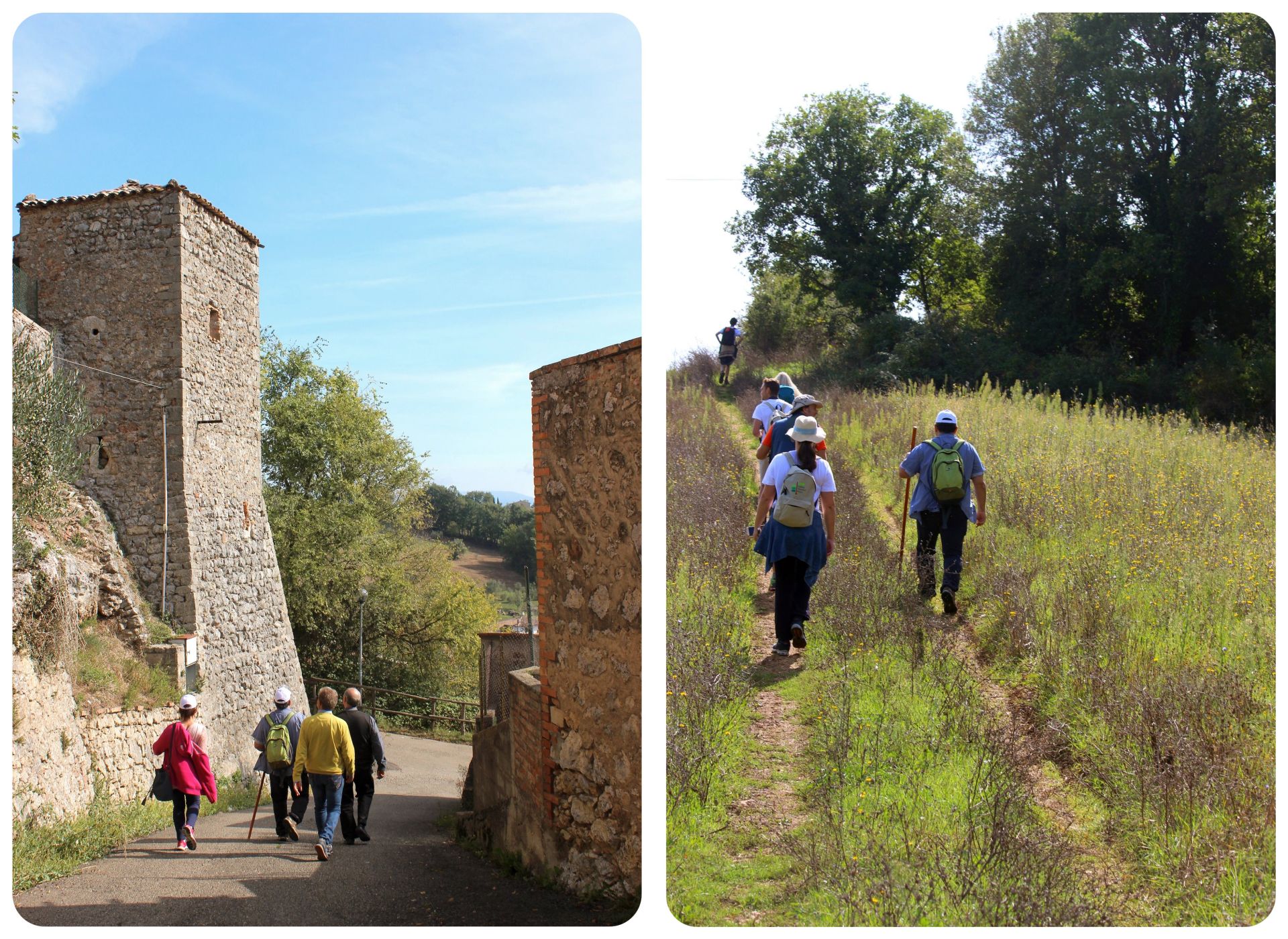
Scenic Umbria
Umbria is a region I had only passed through on previous visits to Italy, but never really explored. I was surprised to see that its natural beauty compared very much to neighboring Tuscany, which has always been my favorite part of Italy.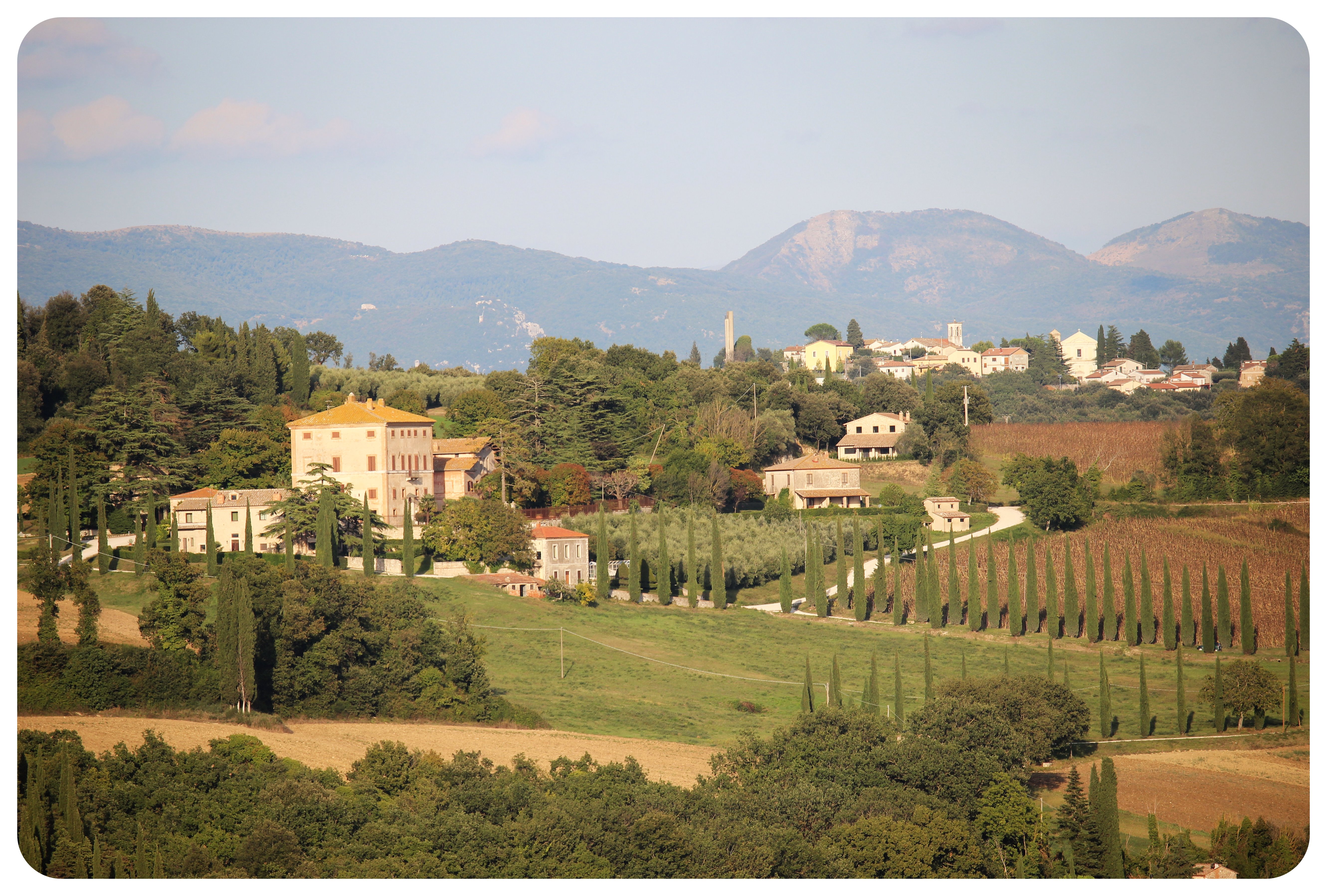
The leg of the walk between the quaint village of Castel dell’Aquila and Amelia, just under 10 miles (15.4km) was possibly the most picturesque day of the hike, but in all honesty, I would be hard pressed picking a favorite. Italy is always just ridiculously scenic, no matter what part of the country you find yourself in.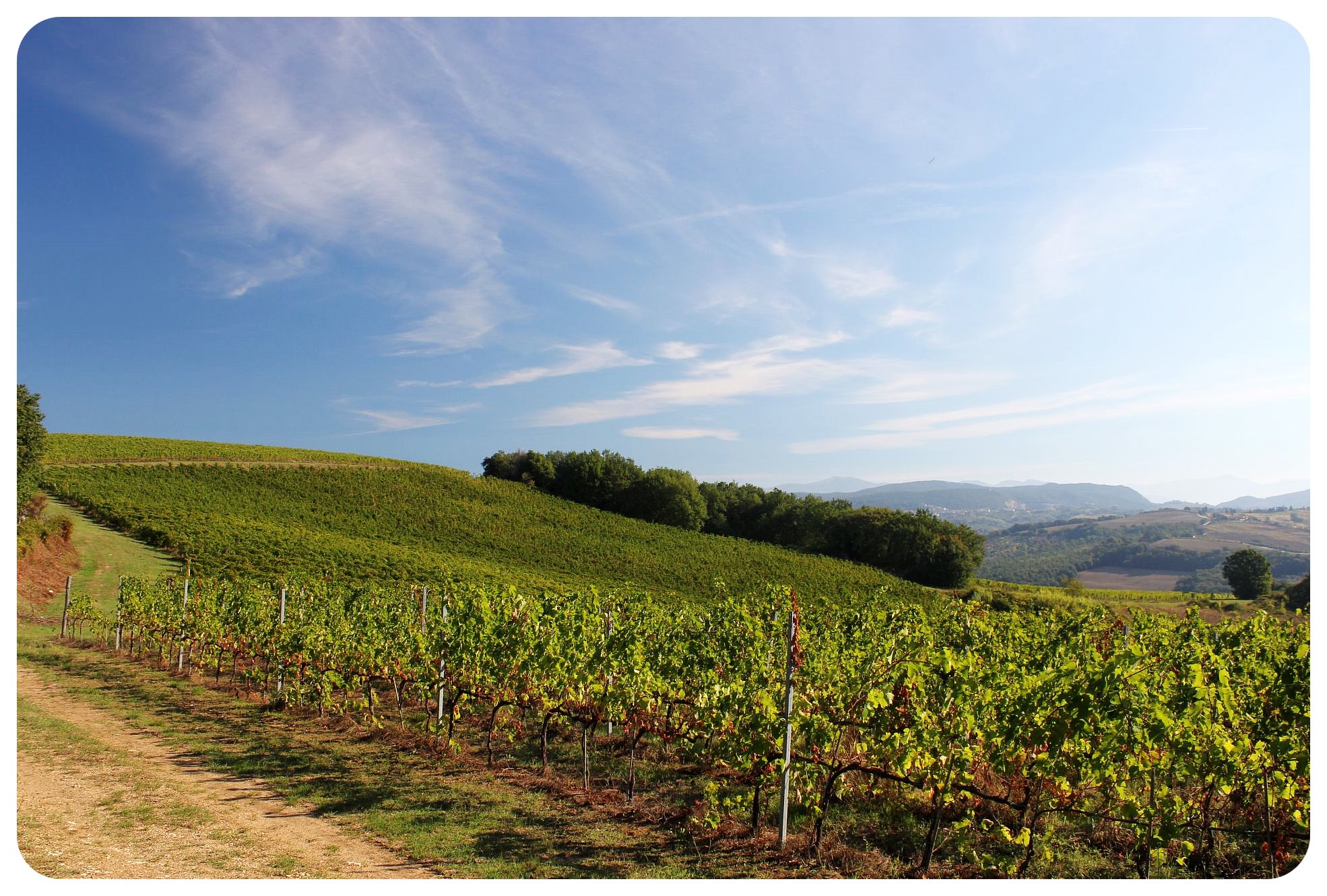
On our walk through the hilly countryside we would see tiny sandstone villages perched on the hillsides, always with a campanile, a bell tower, sticking out.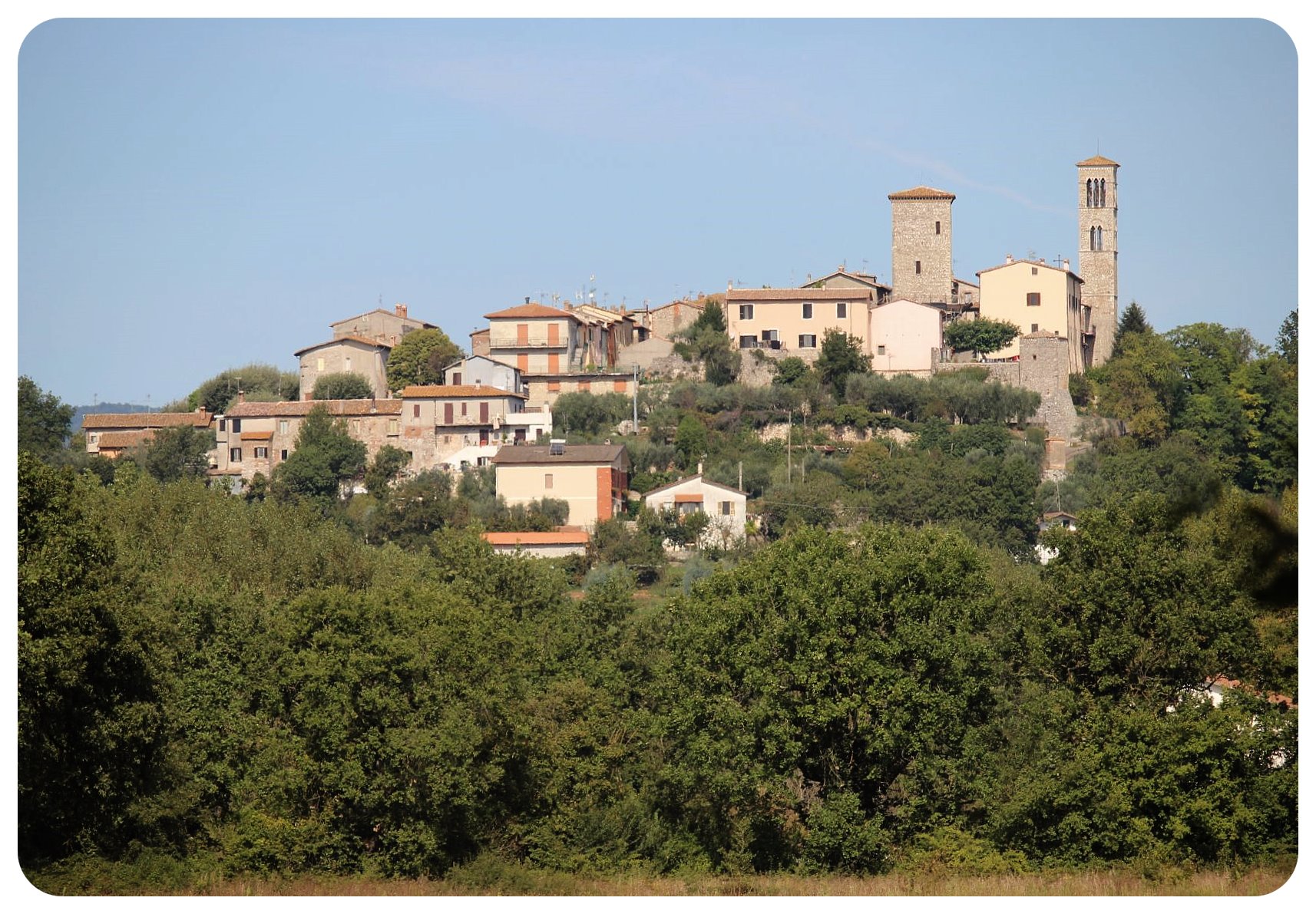
We walked through fields, through vineyards, we passed olive orchards and small farms. I felt like the saying ‘It is about the journey, not the destination’ never held more true than here, where every time we turned a corner, we were rewarded with new breathtaking vistas.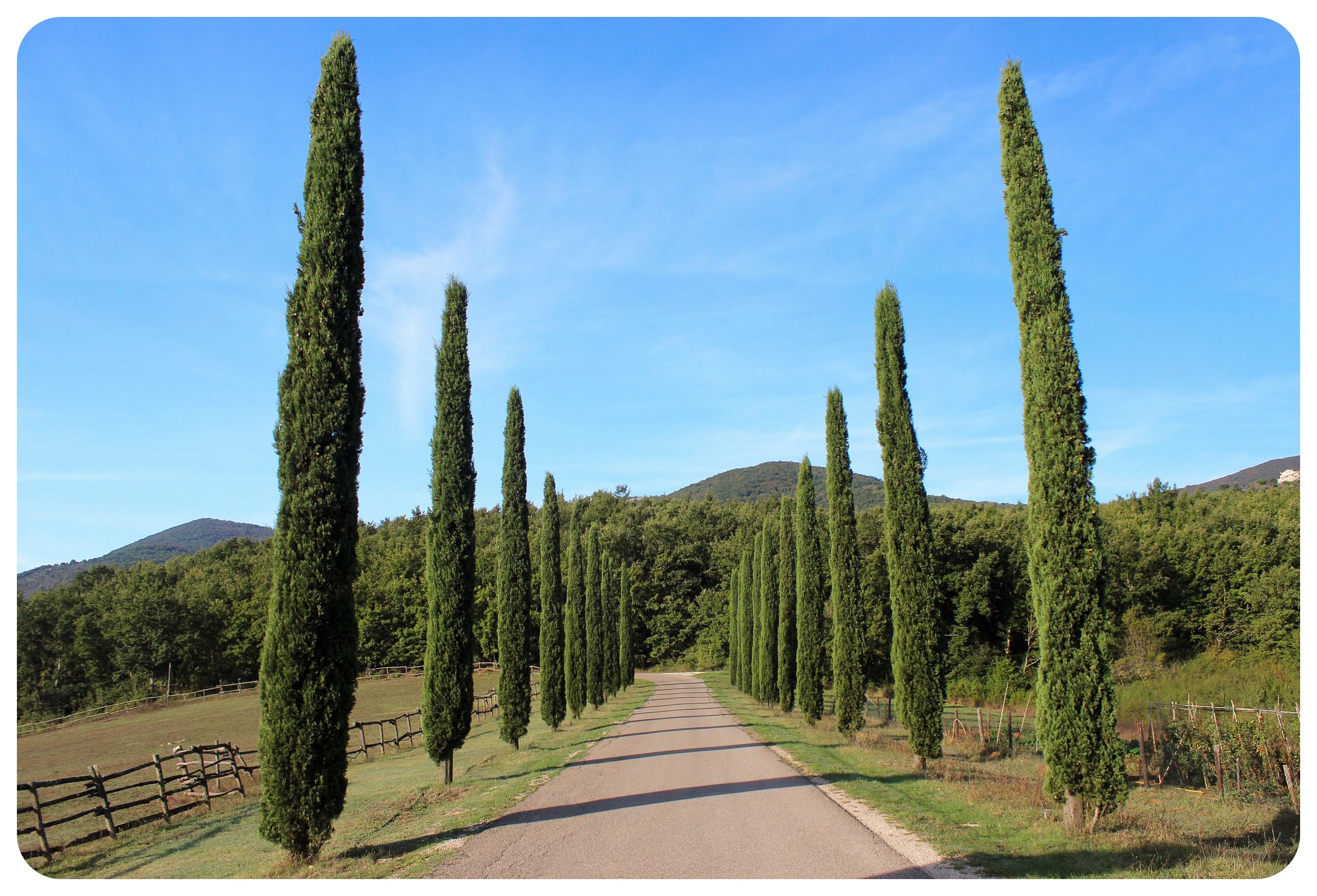
Amelia: Sweeping Views Over The Tiber Valley
Amelia, (formerly America), sits, like most towns in Umbria, on top of a hill, overlooking the surrounding Tiber Valley. A group of local flag-twirlers dressed in period costumes welcomed us with a traditional musical performance and we learn that many of Umbria’s flag-twirlers are so good that they participate in competitions around the world.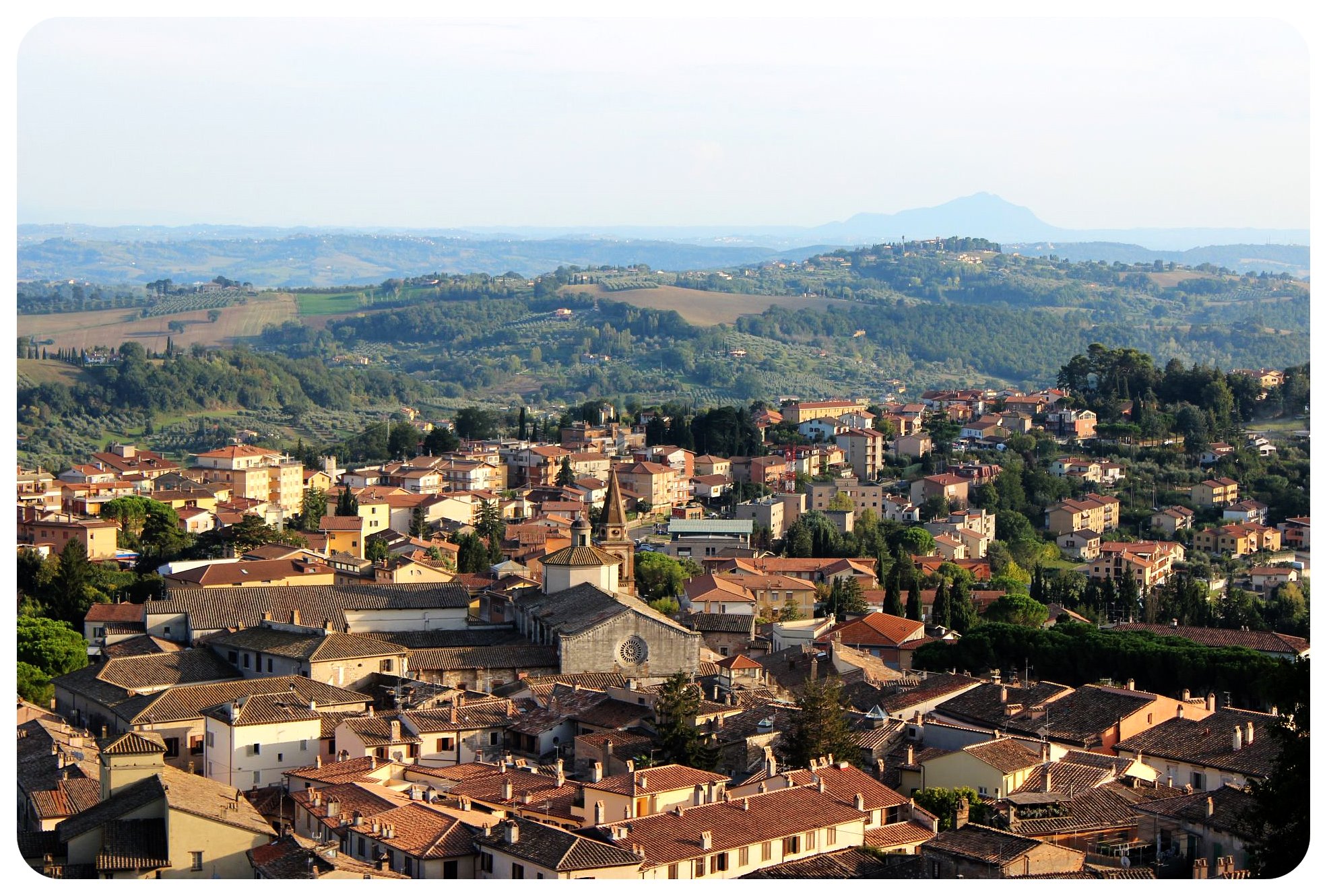 I love that all the medieval towns still have traditional contrade groups – a contrada is a district, or a ward, within an Italian city – and during medieval festivals which are usually held in the summer, members of the various contrade dress in ceremonial garb and parade through the cities.
I love that all the medieval towns still have traditional contrade groups – a contrada is a district, or a ward, within an Italian city – and during medieval festivals which are usually held in the summer, members of the various contrade dress in ceremonial garb and parade through the cities.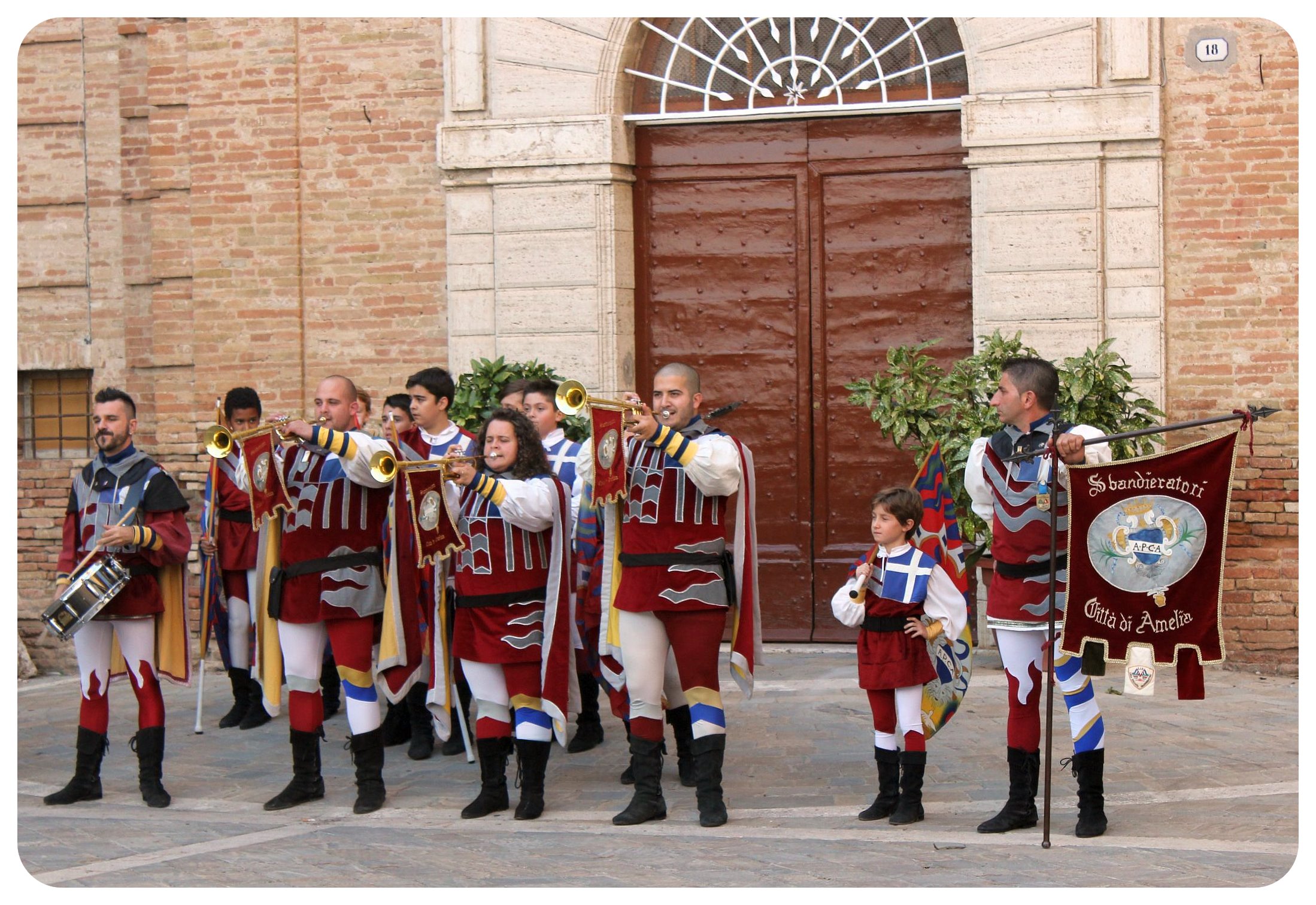 Like most Baroque churches in Italy, Amelia’s cathedral was impressive, with intricate paintings and lots of gold. I may not be religious, but I do have an appreciation for elaborate churches that are hundreds of years old – and I never tired of walking into another house of worship on our way to Rome.
Like most Baroque churches in Italy, Amelia’s cathedral was impressive, with intricate paintings and lots of gold. I may not be religious, but I do have an appreciation for elaborate churches that are hundreds of years old – and I never tired of walking into another house of worship on our way to Rome.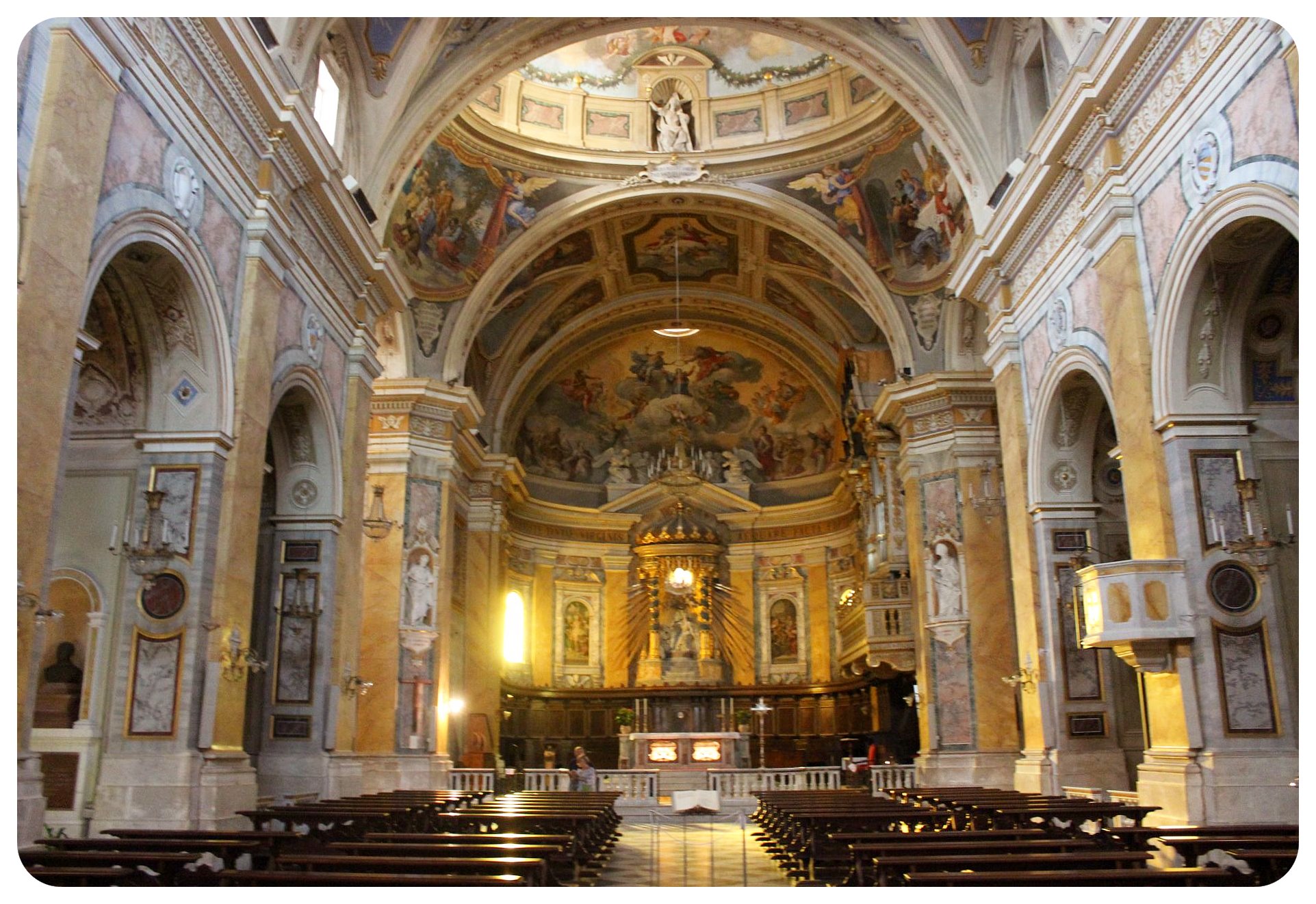 Amelia was so delightful that I could have easily spent another day here, but the Via called, and so we marched onward instead, to Orte, around 10 miles (17 kilometers) south of Amelia.
Amelia was so delightful that I could have easily spent another day here, but the Via called, and so we marched onward instead, to Orte, around 10 miles (17 kilometers) south of Amelia.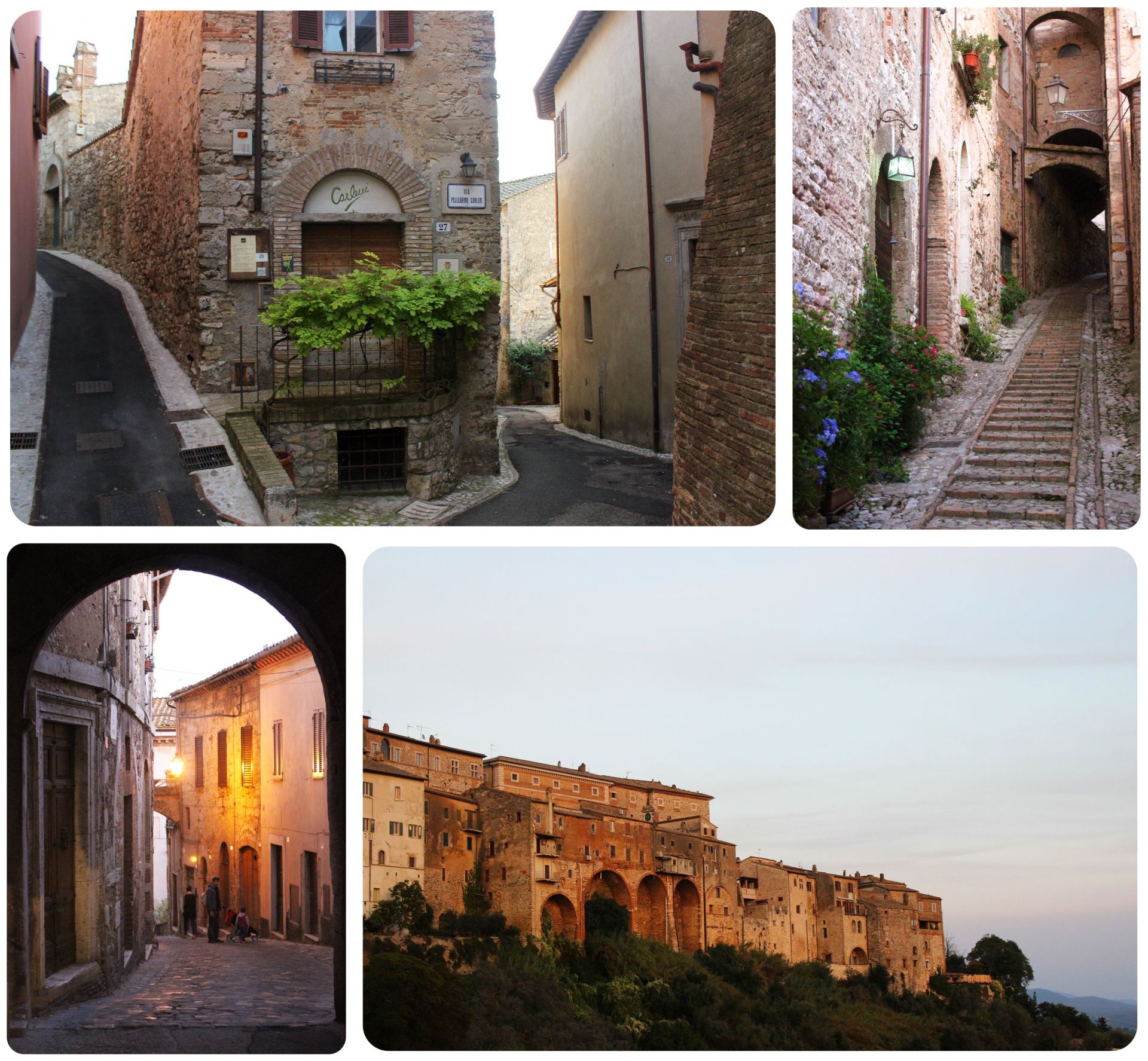
Continue here: Walking Through Italy: Highlights From The Via Amerina, Part II
PIN IT!
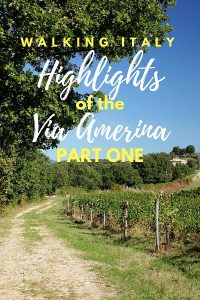


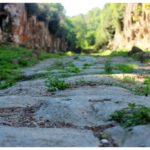


Walking through Italy: Highlights from the Via Amerina, Part II | GlobetrotterGirls
Tuesday 9th of May 2017
[…] …continued from Walking Through Italy: Highlights From The Via Amerina, Part I […]